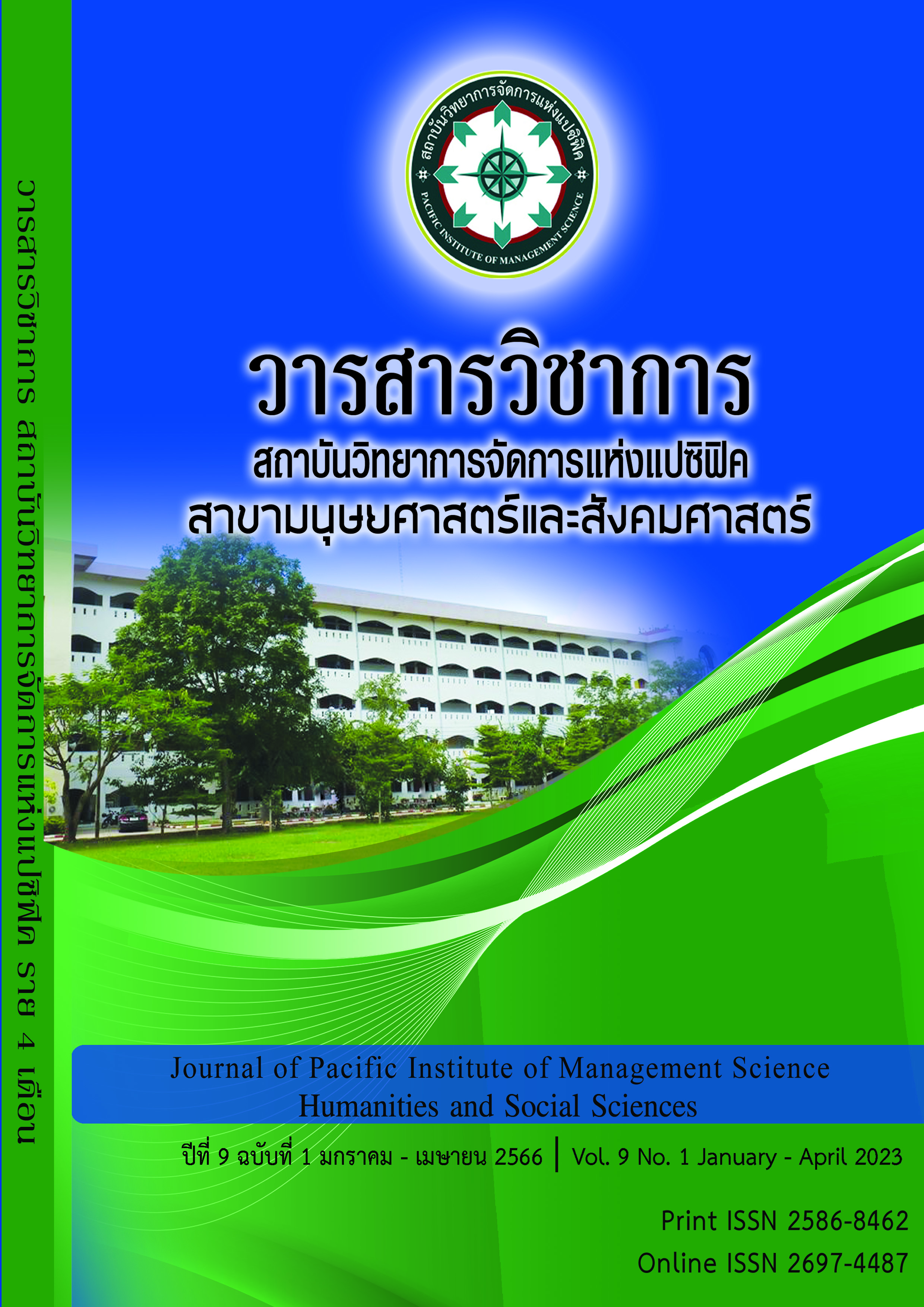Management Model for Sustainable Ecotourism Business of the Eastern Provinces in Thailand
Keywords:
tourism business management, ecotourism business, ecotourism Eastern regionAbstract
The objectives of this research are 1) to study the factors affecting the sustainable ecotourism management in the Eastern provinces area of Thailand 2) to study the components of the causes and effects of sustainable ecotourism management in the Eastern provinces area of Thailand. 3) To develop a sustainable ecotourism business management model in the Eastern provinces area of Thailand. It is a mixed method between qualitative research and quantitative research. Sampling was performed using multistage random sampling. The data were collected by using the opinion questionnaire. Factor analysis was used to group indicators and test. Reliability test was statistically significant. The statistics used for data analysis were percentage, mean, standard deviation, standard deviation), confirmatory factor analysis and path analysis with LISREL 9.10 program. The research results were found that data analysis based on the practicality of the components and observable variables of sustainable factors on eco-tourism management in the Eastern provinces area of Thailand. There were consisted of: ecotourism potential factors (X1), service marketing mix factor (X2), tourism incentive factor (X3), community participation factor (X4) was appropriate and used as a conceptual framework for the sustainable ecotourism management model in the Eastern provinces area of Thailand for a Sustainable ecotourism business model development.in the Eastern provinces area of Thailand. The total number of respondents was 400, most of them male aged 41-50 years. Most of them are bachelor’s degree or equivalent company employees. The average monthly income is 20,001-30,000 baht, the always travel by private car and spent 10,000 baht of travel budgets or more to travel with friends/ colleagues. Most of them arrange the trip by themselves. Normally, it is a long weekend traveling. They usually search the tourist information from the website/ Facebook/Line for traveling. There is a level of opinion on the potential factors of tourist attractions (Attractions) as a whole high level. The level of opinion on the potential factors of tourist attractions in terms of access to tourist attractions. (Accessibility) overall is at a high level. Level of opinion on the potential factors of accommodation tourism destinations (Accommodation) overall is at a high level. The overall picture is at a high level. Those level of opinion on the factors, concepts, theories, motivation, motivations are high. It is high level on the overall community participation factors. Opinion level on overall management factors are high level. There are high level of opinion on the achievement factors of ecotourism management in the Eastern provinces area of Thailand, overall, was at a high level.Analysis results of observable variables Used to study the causal structure relationship of ecotourism management of the Eastern provinces of Thailand. It was found that most of the observed variables had a high level of mean.The analysis results of the relationships between the observed variables. The causal structure relationship model that determines the correlation that is different from zero or not to determine the relationship of co-component before being analyzed for confirmation elements. Using Pearson's correlation coefficient analysis, it was found that the correlation between all observed variables with a statistically significant difference from zero at 0.05. The results of the consistency analysis of the causal structural relationship model of sustainable ecotourism management in the Eastern provinces area of Thailand with empirical data.
References
การท่องเที่ยวแห่งประเทศไทย(2560)แผนปฏิบัติการท่องเที่ยวเชิงนิเวศแห่งชาติ.กรุงเทพฯ:การท่องเที่ยวแห่งประเทศไทย
Bertalanffy, L.V. (1968). General system theory: Foundations, Development, Applications. New York: George Braziller
Caffyn & Jobbins (2003) Tourism, eco-tourism and protected areas. In Kusler, (ed.) Ecotourism and Resource Conservation. Vol. 1. Eco-tourism and resource conservation project.
E. Jerom Mecarthy et al. (2012) Basic Marketing. A Managerial Approach.Homewood, IL: Richard D. Irwin.
Fennell, D. A., & Dowling, R. K. (Eds.). (2003). Ecotourism policy and planning. CABI.
Murphy (2001) Tourism: A community approach. New York, NY: Methuen, Inc
Office of Natural Resources and Environmental Policy and Planning. (2002). The agreement with the Convention on Biological Diversity (Convention on Biological Diversity: CBD). RetrievedApril 26,2014,
Parichat Singhasaktrakul et al. (2010). “The Study of Potentiality and Conservation Tourism Development Approach of Baan Thung-Maprang, Kuan Doan District and Baan Ton- Panan, Kuan Kalong District in Satun Province”. Suthiparithat Journal. 27(83), 97-112.
Rittichainuwat, B., & Rattanaphinanchai, S. (2008). Applying a mixed method of quantitative and qualitative design in explaining the travel motivation of film tourists in visiting a film-shooting destination. Tourism Management, 46, 136-147.
Sparks & Pan (2009) Theoretical Model of Nurse Outcomes: Associations among Nurse Characteristics, Psychological Empowerment, Generation, Quality of Work life, and RN Job Satisfaction. Doctoral dissertation, West Virginia university.
Woodside Arch G.& Martin Drew (2008)Tourism management :analysis, behaviour and strategy / edited by Arch G
Downloads
Published
Issue
Section
License
Copyright (c) 2023 Pacific Institute of Management Science

This work is licensed under a Creative Commons Attribution-NonCommercial-NoDerivatives 4.0 International License.
บทความที่ได้รับการตีพิมพ์เป็นลิขสิทธิ์ของ สถาบันวิทยาการจัดการแห่งแปซิฟิค
ข้อความที่ปรากฏในบทความแต่ละเรื่องในวารสารวิชาการเล่มนี้เป็นความคิดเห็นส่วนตัวของผู้เขียนแต่ละท่านไม่เกี่ยวข้องกับสถาบันวิทยาการจัดการแห่งแปซิฟิค และคณาจารย์ท่านอื่นๆในสถาบันฯ แต่อย่างใด ความรับผิดชอบองค์ประกอบทั้งหมดของบทความแต่ละเรื่องเป็นของผู้เขียนแต่ละท่าน หากมีความผิดพลาดใดๆ ผู้เขียนแต่ละท่านจะรับผิดชอบบทความของตนเองแต่ผู้เดียว







